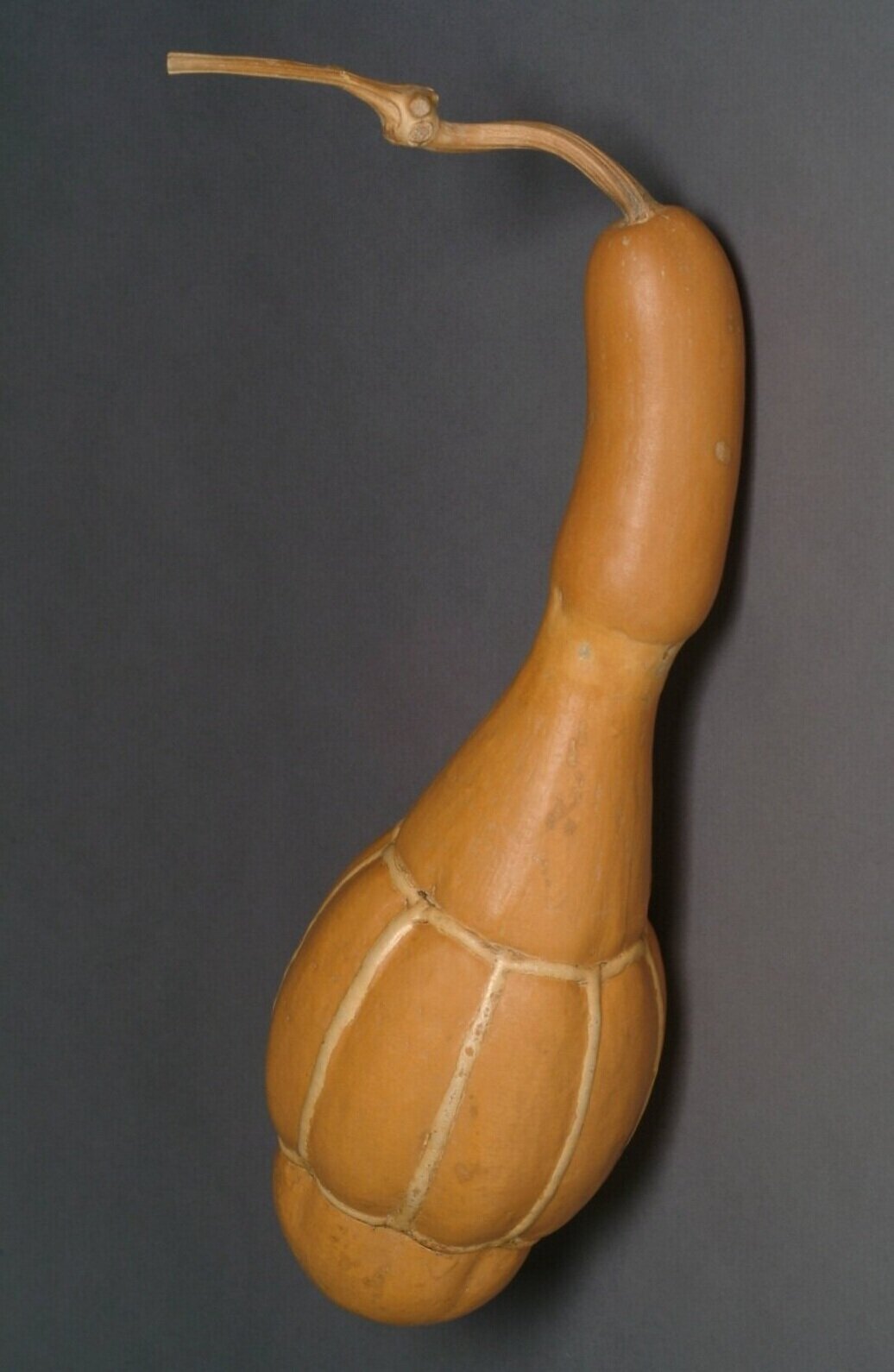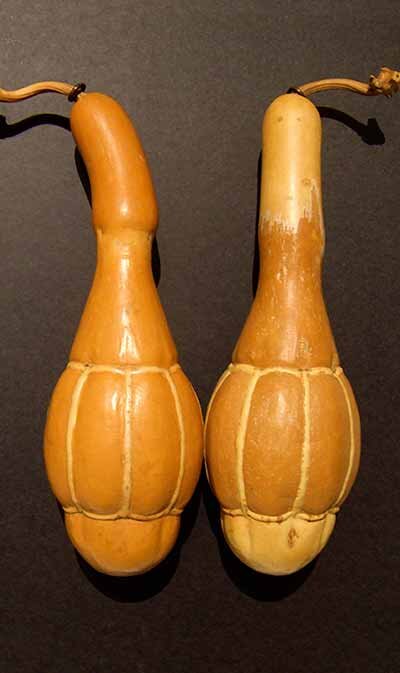Molded Gourds
I was drawn to the idea of shaping gourds after noticing a growing melon that was bulging through a wire fence. I began my project in a similar way: binding and wrapping gourds. I now work with molds of reinforced plaster.
I have always worked with the large, hard-shell, Lagenaria siceraria gourds, also known as calabash or bottle gourds. The diversity of cultivars offers a good variety of sizes and shapes to match fairly closely with the different forms that I am interested in achieving.
In the summer garden, once the flower drops from the nascent, small gourd, it is ready to be carefully inserted into the mold through an opening. The gourd grows into the confines of the mold during the summer season. At first killing frost the stem is cut and the mold is opened. The opening and removal of the gourd from the mold is done very slowly and with great care. When the gourd is finally free, it is put away to dry, which may take from two months to a year. The skin may be wholly scraped away, partially scraped away or not at all depending on the discoloration during drying. The artifact may be mineral oiled or waxed and with reasonable care, it will endure the same as any hard, cellulose, wood-like material.
Classical Sculpture
Silenus - two gourds
Silenus
Willendorf
Borghese Warrior
Iran Venus
African Mask
Belvedere 1
Belvedere 2
African Mask - After Initiation Mask (Mbuya) Zaire, National Museum of African Art, Wash. DC.
Borghese Warrior, reduction and fragment of. After Agasias, 1st Century, BCE. (Hellenistic) Louvre Museum
“Iran Venus” 12 1/2 inches high
Woman (Venus) of Willendorf, after. To scale, 28000 - 25000 BCE, Naturhistorisches Museum, Vienna, Austria. 12.5” high
Seated Belvedere, reduction and fragment of, after Apollonius 69 BCE, Vatican Museum
Silenus, reduction and fragment of, attributed to Lysippos 4th century BCE. Vatican Museum
Torso Belvedere, reduction and fragment of. After Apollonius, 69 BCE, Vatican Museum
Material Identity
Cast Iron Pipe
Leaf Sided
Pipefitting
Bamboo
Woodlog
Cords
Resembling String Tied
String Resemblance
Coupling
Light Irony
Teeth
Kiss Kiss
Opened
Outlet
Lizards
Money
Car
Kiss Pistol
Pistol
Seated Gourd

























